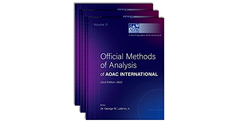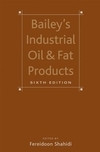Official Methods of Analysis of AOAC INTERNATIONAL 3-Volume Set 22nd Twenty-Second Edition
Published April 2023, Available Ready Stock , Order your Books !
3750 Pages
279 x 216 mm
AOAC INTERNATIONAL and George W. Latimer, Jr.
- The most comprehensive and reliable collection of chemical and microbiological methods and consensus standards available
- Covers over 3,000 validated methods recognized worldwide
- Includes 150 voluntary consensus standards in the areas of food, infant formula, dietary supplements, cannabis, furans, food authenticity, rosins, glyphosates, microbiology, biothreat detection
- Provides 18 appendices on methods validation, laboratory safety, and laboratory quality assurance
AOAC INTERNATIONAL has been publishing a robust set of methods for analytical scientists since 1884. Scientists from around the globe contribute their expertise to ensure the content remains reliable in terms of standards development, method development, and the systematic evaluation and review of methods. As a result, the Official Methods of Analysis of AOAC INTERNATIONAL is the most comprehensive collection of chemical and microbiological methods available in the world. Now in its twenty-second edition, this publication continues to be the most extensive and reliable collection of chemical and microbiological methods and consensus standards.
Many methods within the compendium have notation indicating their adoption as harmonized international reference methods by the International Organization for Standardization (ISO), the International Dairy Federation (IDF), the International Union of Pure and Applied Chemistry (IUPAC), and the Codex Alimentarius Commission. This new edition includes new and updated methods approved since 2019
Table of Contents


















